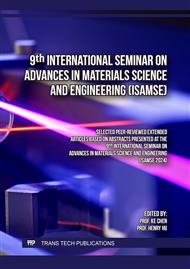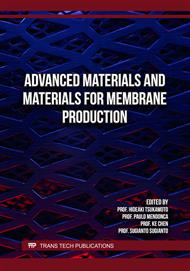p.3
p.11
p.23
p.29
p.37
p.43
p.51
p.57
Hardness Degradation Behaviors of Ni-Base Superalloys after Phase Coarsening
Abstract:
Ni-based superalloys are commonly utilized in the production of hot-end components in the aerospace, energy, and other sectors. Due to the extreme environment, phase coarsening is prone to occur within the alloys, leading to degradation in the mechanical properties and thus posing a risk to equipment safety. To investigate the influences of volume fraction of precipitation particles and phase coarsening on hardness of materials, and explore the relationship between their microstructure and macroscopic hardness, based on the finite element method simulations, a two-dimensional Vickers hardness model is constructed for testing. Results show that hardness is closely linked to the particle shape, size, and distribution features; with the increase of the volume fraction of particles or the degree of phase coarsening, the hardness of alloys gradually weakens; and when the volume fraction of particles is larger, the decrease in the hardness is more obvious along with the degree of phase coarsening. Related research makes a good reference for the design of Ni-base superalloy structures as well as the evaluation or prediction of their mechanical properties during the service.
Info:
Periodical:
Pages:
23-28
Citation:
Online since:
December 2024
Authors:
Price:
Сopyright:
© 2024 Trans Tech Publications Ltd. All Rights Reserved
Share:
Citation:



